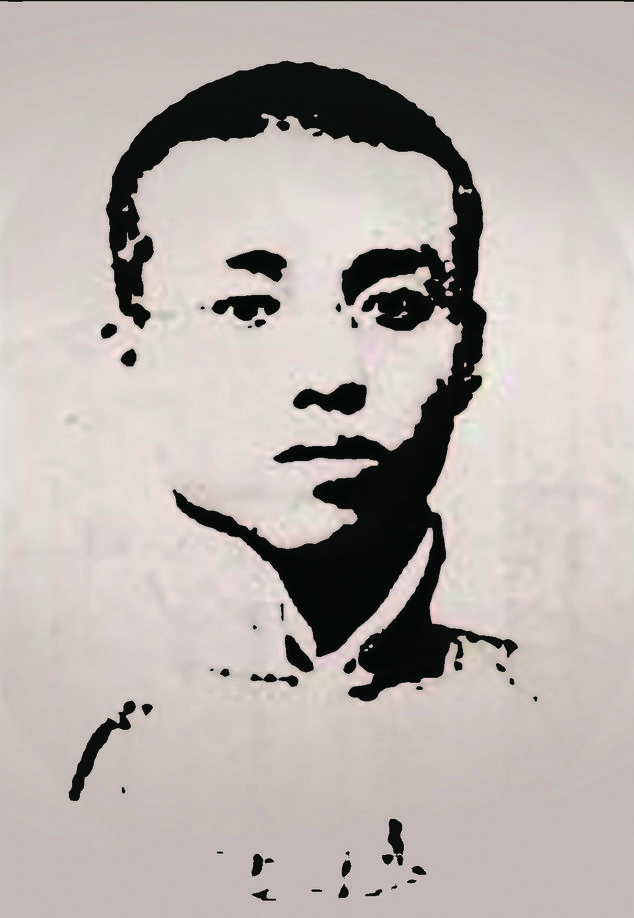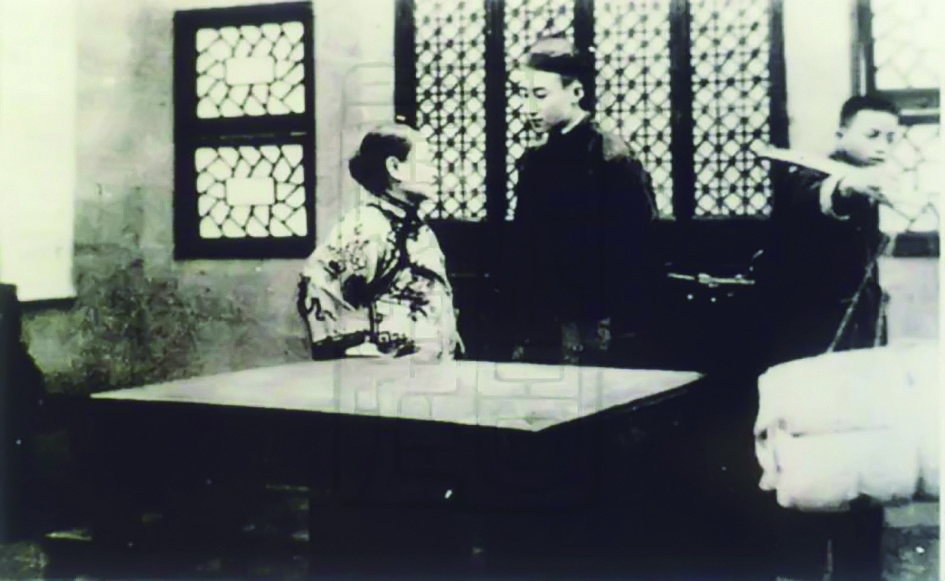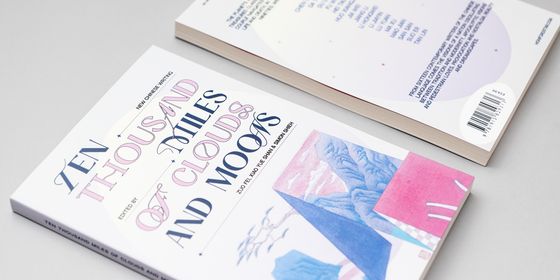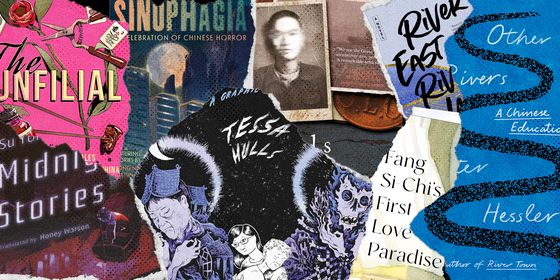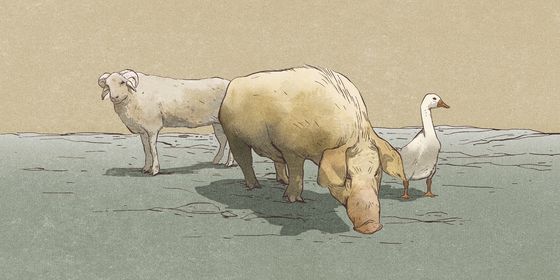How “Mandarin Duck and Butterfly,” a romantic literary movement from early 20th century China, became forgotten in the tides of modernization
China in 1912: the most chaotic of times, the most hopeful of times. After popular uprisings swept the country, the Qing dynasty collapsed and the Republic of China was established on January 1, 1912. Free of imperial rule, China was ready to modernize, reform, and reinvent itself—but how?
It is not surprising that much of China’s most famous modern literature emerged from this period of national soul-searching. However, one body of writing, known as Mandarin Duck and Butterfly (鸳鸯蝴蝶) literature, is often overlooked in the modern Chinese canon. These fanciful stories about melodramatic and tragic love were heavily criticized by intellectuals of their time and purposefully cast aside. Yet, this overlooked school reveals much about the evolution of post-imperial literature.
Butterfly literature has its roots in a tradition of Chinese love stories dating back to the 17th century, known as caizi jiaren (才子佳人) or “scholar-beauty” stories. Writers of this genre celebrated the often tragic stories of forbidden love between a sensitive male scholar and a beautiful, virtuous woman, and eventually evolved to include dynamics of heroism, militarism, sentimentality, and Confucian propriety.
At the close of the Qing dynasty (1616 – 1911), the Mandarin Duck and Butterfly literary movement burst forth to carry the tradition of Confucian love stories to a changed China. Named for two species often seen in pairs and used as a metaphor for lovers, these love tragedies and crime dramas—the genres favored by both Butterfly writers and readers—provided entertainment “without striving for new social visions,” according to scholar Rey Chow.
The prime example of Mandarin Duck and Butterfly literature was written by Xu Zhenya (徐枕亚), a writer from Jiangsu. His 1912 novel Yulihun (《玉梨魂》), or Jade Pear Spirit, told an intense and tragic tale of love at the twilight of imperial China. In the story, a widow falls head over heels with her son’s tutor. The lovers’ passion compels them to swear eternal commitment and write letters in blood; nonetheless, they dare not make their affair public or marry due to the social taboo of widows remarrying. The tale ends with the widow dying so that the tutor is free to marry a socially acceptable match, but he also dies soon after, grieving her. The lovers of Jade Pear Spirit are obsessed with following Confucian propriety and traditional morals: They choose to die rather than rock the boat.
Jade Pear Spirit was a breakout hit, selling over 20,000 copies in its first two years. It was republished as a magazine serial from 1914 to 1919. According to literary critic C. T. Hsia, Jade Pear Spirit was one of the most (if not the most) printed books of China’s Republican era, which lasted almost 40 years from 1912 to 1949. Female readers fantasized about Xu, the author, as a classic romantic who would sweep them off their feet. One female fan, completely enamored, convinced Xu to marry her. Unfortunately, she discovered only afterward that Xu was a slovenly and depressed opium addict whose best writing years were long behind him.
He Haiming (何海鸣), a Hunan native who relocated to Hong Kong after an anti-government uprising in Nanjing in 2013, was another writer who caught readers’ imagination with his 1923 short story “For the Love of Her Feet.” The narrator Ah Fu, after pining for years after a pair of beautiful feet he saw walking by outside the window of his warehouse basement office, finally meets their owner in an unlikely form: an old prostitute. Yet love triumphed over their class differences: When the prostitute asks to simply be Ah Fu’s concubine, he instead decides to marry her. “Your feet have now taken you through the gate of good fortune,” he tells her. “May you keep them under control for my sake.” A typical theme for Butterfly writers, true love is the prostitute’s ticket out of a culturally shameful lifestyle.
But in an age of constant social reform, imperialist threats to China’s territory, and economic uncertainty, critics argued that Jade Pear Spirit and “For the Love of Her Feet” did nothing more than entertain. Intellectuals grew increasingly disillusioned with the “old style” of literature for failing to help modernize China or promote scientific thinking. These thinkers coalesced into the newly-christened New Culture movement, a group criticizing classical Chinese culture in favor of modernization based on Western scientific and democratic principles. These writers found Chinese tradition to be “primitive,” “decadent,” and “cannibalistic,” according to Chow, and their writing focused on “in-depth discussions on philosophy and the search for a new and reformed China,” rather than providing pleasure.
The intellectual Chen Duxiu (陈独秀), who would go on to co-found the Communist Party of China in 1921, was one of those who criticized the values in Butterfly texts. “Loyalty, filial piety, chastity, and righteousness are a slavish morality,” he wrote in the 1915 essay “Call to Youth.” “I would much rather see the past culture of our nation disappear than see our race die out now.” Likewise, “May Fourth” author Lu Xun (鲁迅) criticized the evils of traditional culture in his chilling short story “Diary of a Madman,” featuring a main character convinced he is living in a society cannibalized by old values. “My history has no chronology,” the madman writes. “Scrawled all over each page are the words: ‘Virtue and Morality’...I began to see words between the lines, the whole book being filled with the two words—‘Eat people.’”
May 4, 1919, was the turning point for those New Culture intellectuals disaffected with an outdated and restrictive traditional culture. On that day, students taking to the streets of Peking in protest against imperialism, igniting a movement that soon morphed into a general call for democracy, scientific development, and political reform. In the words of Hu Shi (胡适), professor and later president of Peking University, this was a “Chinese Renaissance.” May Fourth intellectuals saw literature as a political tool to shape and unify the nation. The glorification of tradition in Butterfly literature, as well as its sensationalized and romantic style, had no place in this endeavor.
The sociopolitical movement also revealed schisms in the discussion surrounding Chinese language reform. Post-May Fourth intellectuals sought to replace traditional literary Chinese with vernacular, or baihuawen (白话文). In the first two decades of the 1900s, writing styles were caught in a linguistic limbo between classical Chinese and baihuawen: a language stripped of arcane literary allusions but still persisting in classical forms. Butterfly literature had fluttered between the two styles, with Xu’s Jade Pear Spirit experimenting with multiple types of classical prose alongside less formal dialogue.
The changing tides of literature proved deadly for the Butterfly movement. Some of its writers ended their career in disgrace. Jade Pear Spirit’s Xu, an opium addict living in obscurity, died in 1937. He Haiming moved back to Nanjing from Hong Kong, where he lived an extravagant life, until he died penniless in the Japanese-occupied city.
Other Butterfly writers evolved in response to the changing times, even metamorphosing into post-May Fourth authors. One periodical, Fiction Monthly or Xiaoshuo Yuebao (小说月报), was originally a Butterfly publication, but when the writer and critic Mao Dun (茅盾), who later became Minister of Culture of the PRC, took over leadership of the magazine in 1921, it switched its focus to translating European literature, vernacular writing, and realism. In a short time, Fiction Monthly became a magazine associated with May Fourth intellectuals and ideas, publishing well-known authors of the movement like Lu Xun, Lao She (老舍), and more.
May Fourth literature was destined to last longer than the escapist romanticism of Butterfly works. Instead of glorifying the past, writers used literature to point to the future and call for national unity. Their works introduced China to new ideas like science, democracy, social Darwinism, and Communism. The future leaders of the PRC also matured on a steady diet of this literature. Li Dazhao (李大钊) founded not only May Fourth literary journals but also, alongside Chen Duxiu, the Communist Party of China. A generation inspired by post-May Fourth literature would go on to form the PRC and shape China’s future.
Yet Butterfly tales aren’t without their historical advocates. Zhu Ziqing (朱自清), a modernist pioneer and May Fourth essayist, conceded in a 1947 essay that “the novels of the Mandarin Duck and Butterfly School are intended for people to have fun after drinking, but they are authentic Chinese novels. Chinese novels have always been dominated by the uncanny and legendary.”
University of Jilin professor Lu Yu more recently has also heralded Butterfly literature as an important stepping stone for more revolutionary literature. Since Butterfly literature found its largest audience among casual readers, the sheer popularity of Jade Pear Spirit and other works “trained” the masses to have good reading habits, making them receptive to May Fourth literature. Professionally curated anthologies such as 2011’s The Collected Works of the Mandarin Duck and Butterfly School by the People’s Literature Publishing House, further introduced Butterfly writers like Xu Zhenya, He Haiming, Zhang Henshui (张恨水) to modern readers.
The Butterfly movement also reveals its presence in modern Chinese romance literature, which still hinges on two lovers with stereotypical personality types, long-suffering affairs, and melodrama. Like Butterfly works, modern romance genres such as danmei (strong men pursuing feminized, emotional men) and yanqing (strong men pursuing soft, emotional women) highlight romance and pleasure rather than more socially constructive goals, and face similar criticism about conservative values as their literary predecessors.
Despite the disappearance of Butterfly literature in the years after May Fourth, this school has exerted profound influence on the formation of modern Chinese literature. The movement took on the ambitious task of integrating traditional literary forms with the modern age. They were the first group to creatively imagine how normal Chinese life, with all its love, tragedy, and scandals, would proceed in the post-Qing chaos. Although Butterfly writers failed to satisfy intellectuals and offered no concrete answers to the challenges facing China, perhaps they knew something their May Fourth colleagues didn’t: When times are tough, sometimes escaping into a good book is all that one needs.
The Butterfly Effect: Redeeming China’s Early Romance Novels is a story from our issue, “Access Wanted.” To read the entire issue, become a subscriber and receive the full magazine.







